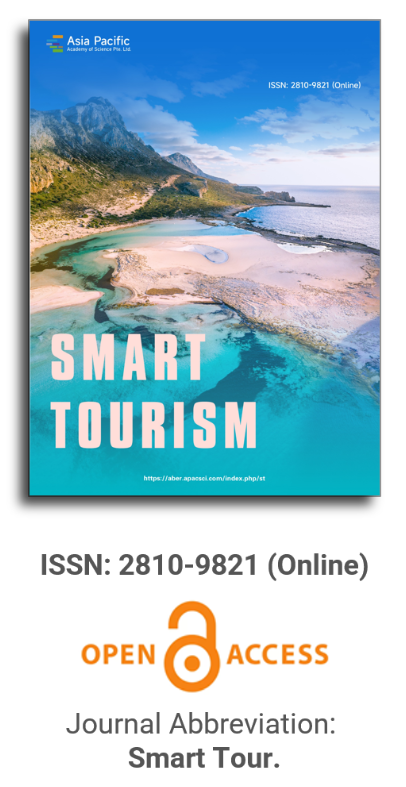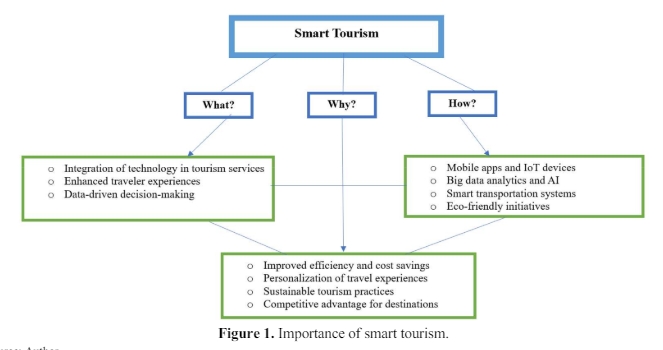


The Eighth Wonder of the World in New Zealand: Seismic studies confirm the new Hochstetter paradigm
Download PDF
Abstract
The most famous tourist attractions in the southern hemisphere, in the nineteenth century were the Pink and White Terraces—New Zealand’s lost Eighth Wonder of the World. They were assumed lost in an1886 eruption. The unpublished 2018 data from passive seismic stations across the Lake Rotomahana overflow in the Taupō Volcanic Zone are examined for evidence of acoustic interfaces that may be traced to Te Tarata, the White Terraces, the stations were coincidentally placed over the reported course of the Kaiwaka Channel buried in the 1886 Tarawera eruption. There was no seismic evidence of the Channel at the reported altitude under either the Smith-Keam or Hochstetter paradigms. This absence is strong empirical negative evidence that the Kaiwaka Channel did not flow beneath today’s Lake Rotomahana overflow, as has been assumed since 1886 under the Smith-Keam paradigm. Unlike the seismic and GPR Black Terrace Crater and Te Tuhi’s Stream (aka Black Terrace Stream) bed evidence obtained by the same 2018 survey—there is no evidence of a pre-1886 eruption paleochannel beneath today’s overflow saddle at the lake and at the Kaiwaka altitude under the 1886 Smith-Keam paradigm or the contemporary Hochstetter paradigm, the latter based upon Hochstetter’s unique terrestrial survey of the Rotomahana Basin. The study reports strong empirical evidence contradicting the assumed Kaiwaka location and with it, the assumed locations of old Lake Rotomahana and the Pink and White Terraces. The Smith-Keam paradigm is thereby confounded. The seismic data provide concomitant empirical evidence for the Rotomahana altimetry and topography reported by Bunn and Nolden, who locate the Kaiwaka Channel 440 m west of the seismic stations. The Pink and White Terraces can no longer be assumed destroyed. They may yet be explored and recovered.
Keywords
References
- Bunn AR. Raising the tattooed rock—A tourism proposal of national significance. In: Proceedings of the Plenary Meetings of the TTA and PAWTL Project; 4 April–28 May 2014; Rotorua, New Zealand.
- Bunn AR. Quest for the Pink and White Terraces: The Expedition to Recover New Zealand’s Eighth Wonder of the World, 1st ed. A Rex Bunn; 2016.
- de Ronde C. Scientists find part of Pink and White Terraces under Lake Rotomahana. Available online: https://www.gns.cri.nz/news/scientists-find-part-of-pink-and-white-terraces-under-lake-rotomahana/ (accessed on 17 May 2022).
- Bunn AR, Nolden S. Te Tarata and Te Otukapuarangi: Reverse engineering Hochstetter’s Lake Rotomahana Survey to map the Pink and White Terrace locations. Journal of New Zealand Studies 2016; 23: 37–53. doi: 10.26686/jnzs.v0i23.3988
- Bunn AR, Nolden S. Foensic cartography with Hochstetter’s 1859 Pink and White Terraces survey: Te Otukapuarangi and Te Tarata. Journal of the Royal Society of New Zealand 2018; 48(1): 39–56. doi: 10.1080/03036758.2017.1329748
- de Ronde C, Tontini FC, Keam RF. Where are the Pink and White Terraces of Lake Rotomahana? Journal of the Royal Society of New Zealand 2018; 48: 1–24.
- Bunn AR, Davies N, Stewart D. Dr Hochstetter’s Lost Survey. Available online: https://www.researchgate.net/publication/342994780 (accessed on 17 June 2023).
- Bunn R. Hochstetter’s survey of the Pink and White Terraces: The final iteration. Surveying + Spatial 2019; (99): 30–35. doi: 10.5281/zenodo.7776392
- Bunn R. Photographic embellishment and fakery at the Pink and White Terraces. New Zealand Legacy 2019; 31(1): 5–10. doi: 10.5281/zenodo.7820274
- Bunn AR. Reconciling new and old surveys of the Pink and White Terraces. Surveying + Spatial 2020; 102: 29–36. doi: 10.5281/zenodo.7776430
- Bunn R. Commentary: Locating relict sinter terrace sites at Lake Rotomahana, New Zealand, with Ferdinand von Hochstetter’s legacy cartography, historic maps, and LIDAR. Frontiers in Earth Science 2020; 8: 68. doi: 10.3389/feart.2020.00068
- Bunn R. The first evidence-based altimetry for locating the lost Eighth Wonder of the World: The Pink, Black and White Terraces. Academia Letters 2022; 5204. doi: 10.20935/AL5204
- Bunn AR. The Eighth Wonder of the World in New Zealand—The third, Black Terrace. Available online: https://eartharxiv.org/repository/view/3433/ (accessed on 9 June 2023).
- Bunn AR. Resolving the 1886 White Terraces riddle in the Taupō Volcanic Zone. Frontiers in Earth Science 2023; 11: 1–22. doi: 10.3389/feart.2023.1007148
- Bunn R. Coanda and venturi effects at the Eighth Wonder of the World the White Terrace—The White Terrace resolving the east wind eruptions at the White Terraces. Journal of Environmental Science Current Research 2023; 6: 44. doi: 10.24966/ESCR-5020/100044
- Bunn AR. Identifying and dating the White Terraces: New Zealand’s Eighth Wonder of the World and the 1886 Rotomahana Basin hydrology. Academic Journal of Hydrology & Water Resources 2023; 1(1). doi: 10.22541/essoar.168986217.77410413/v1
- Bay of Plenty Regional Council. Rotorua Te Arawa Lakes asset management plan 2021–2031. Available online: https://atlas.boprc.govt.nz/api/v1/edms/document/A3849132/content (accessed on 9 June 2023).
- Bunn AR. Rediscovering Te Tuhi’s Spring and Black Terrace Crater, the Forgotten Rotomahana Spring and crater. In: Proceedings of the PAWTL2 Plenary Meeting; 2017; Wāhiao, Whakarewarewa, Rotorua.
- NZ river name polygons (pilot). Available online: https://data.linz.govt.nz/layer/103631-nz-river-name-polygons-pilot/ (accessed on 17 May 2022).
- White P, Lorrey A, Woolley JM, et al. Black Terrace, Rotomahana. In: Proceedings of the 42nd New Zealand Geothermal Workshop; 24–26 November 2020; Waitangi, New Zealand.
- Meyers J. Passive seismic surveying background, methods and HVSR case studies. Available online: https://www.respot.com.au/wp-content/uploads/2020/10/01_Passiveintro_Meyers.pdf (accessed on 11 June 2023).
- Smith SP. Volcanic eruption at Tarawera. Available online: https://atojs.natlib.govt.nz/cgi-bin/atojs?a=d&d=AJHR1886-I.2.3.3.37&e=-------10--1------0-- (accessed on 11 June 2023).
- Savage J. Some account of New Zealand. Available online: http://www.enzb.auckland.ac.nz/document/%5B1858%5D_-_Smith%2C_S._P._An_1858__Journey_into_the_Interior_%5BPublished_1953%5D?action=null (accessed on 9 June 2023).
- Hochstetter F, Petermann A. Geological and Topographical Atlas of New Zealand: Six Maps of the Provinces of Auckland and Nelson. T. Delattre; 1864.
- Nairn IA. Geology of the Okataina Volcanic Centre. IGNS, Wellington; 2002.
- Nairn IA. Rotomahana-Waimangu eruption, 1886: Base surge and basalt magma. New Zealand Journal of Geology and Geophysics 1979; 22(3): 363–378. doi: 10.1080/00288306.1979.10424105
- Hodgson KA, Nairn IA. The c. AD 1315 syn-eruption and AD 1904 post‐eruption breakout floods from Lake Tarawera, Haroharo caldera, North Island, New Zealand. New Zealand Journal of Geology and Geophysics 2005; 48(3): 491–506. doi: 10.1080/00288306.2005.9515128
- Paterson R. Lake Rotomahana Outlet Study. Riley Consultants, Rotorua; 2003.
- Cross J, Cross T. The GOSA transactions. Available online: https://gosa.org/wp-content/uploads/2022/01/GOSA_Transactions13.pdf (accessed on 9 June 2023).
- Cross D. Soils and geology of some hydrothermal eruptions in the Waiotapu district. New Zealand Journal of Geology and Geophysics 1963; 6(1): 70–87. doi: 10.1080/00288306.1963.10420090
- Riley S, Meyers J, Sinnott J. Passive seismic HVSR surveying for groundwater exploration at the Chilalo Graphite Project, Tanzania. ASEG Extended Abstracts 2019; 2019(1): 1–5. doi: 10.1080/22020586.2019.12073155
- Nolden S, Nolden SB. Hochstetter Collection Basel: Part 2-New Zealand Photographs & Prints. Mente Corde Manu; 2012.
- Lynne B, Heasler H, Jaworowski C, et al. Ground penetrating radar imaging of old faithful geyser vent, yellowstone national park, USA. In: Proceedings of the 38th New Zealand Geothermal Workshop; 23–25 November 2016; Auckland, New Zealand.
- Keam RF. The Tarawera eruption, Lake Rotomahana, and the origin of the Pink and White Terraces. Journal of Volcanology and Geothermal Research 2016; 314: 10–38. doi: 10.1016/j.jvolgeores.2015.11.009
- British geological survey. Passive seismic surveying: Tromino. Available online: https://www.bgs.ac.uk/geology-projects/geophysical-tomography/technologies/tromino/ (accessed on 13 June 2023).
- Hochstetter F. New Zealand: Its Physical Geography, Geology and Natural History with Special Reference to the Results of Government Expeditions in the Provinces of Auckland and Nelson. Stuttgart, J. G. Cotta; 1867.
- Smith SP. Notes on the Present State of the Country Immediately Round the Site of the Eruption of Tarawera. Department of Lands and Survey; 1894.
- Bunn AR, Nolden S. Ferdinand von Hochstetter’s November 1860 Folio of New Zealand survey data and the location of the Pink and White Terraces. Available online: https://eartharxiv.org/repository/view/5164/ (accessed on 9 June 2023).
- Susskind L. The Black Hole War. Back Bay Books; 2008.
- Kuhn TS. The Structure of Scientific Revolutions. University of Chicago Press; 1962.
Supporting Agencies
Copyright (c) 2023 Alfred Rex Bunn
License URL: https://creativecommons.org/licenses/by/4.0/

This site is licensed under a Creative Commons Attribution 4.0 International License (CC BY 4.0).

Prof. Hung-Che Wu
Nanfang College, Guangzhou
China
Indexing & Archiving
Asia Pacific Academy of Science Pte. Ltd. (APACSCI) specializes in international journal publishing. APACSCI adopts the open access publishing model and provides an important communication bridge for academic groups whose interest fields include engineering, technology, medicine, computer, mathematics, agriculture and forestry, and environment.



.jpg)
.jpg)

.jpg)

